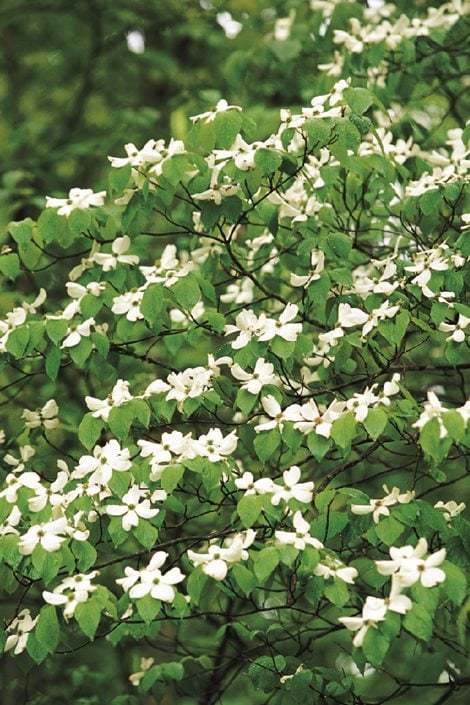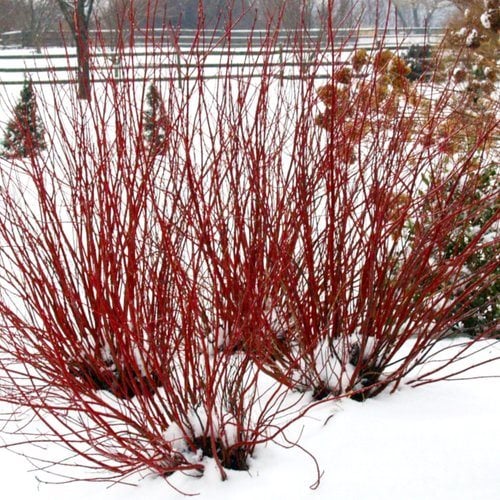The Dogwood Shrub: A Beautiful And Easytogrow Option For Your Landscape
Dogwood shrubs are a beautiful and easy-to-grow option for your landscape. They come in a variety of shapes and sizes, so you can find one that is perfect for your space. Dogwoods are also relatively low-maintenance, making them a great choice for busy gardeners.
In this blog post, we will discuss the different types of dogwood shrubs, how to plant and care for them, and some of the benefits of adding them to your landscape.
Types of Dogwood Shrubs
There are many different types of dogwood shrubs, each with its own unique characteristics. Some of the most popular types include:
- Flowering dogwood: This type of dogwood is known for its showy flowers, which bloom in the spring. Flowering dogwoods can grow up to 30 feet tall, but there are also dwarf varieties that are more suitable for smaller spaces.
- Kousa dogwood: This type of dogwood is also known for its flowers, which bloom in the summer. Kousa dogwoods are a bit more cold-hardy than flowering dogwoods, and they can grow up to 40 feet tall.
- Red-osier dogwood: This type of dogwood is known for its bright red stems, which are especially eye-catching in the winter. Red-osier dogwoods are relatively small, growing only 6-12 feet tall.
- Silky dogwood: This type of dogwood is known for its delicate, white flowers, which bloom in the spring. Silky dogwoods are a bit more difficult to find than some of the other types of dogwood shrubs, but they are worth the effort.
Planting and Caring for Dogwood Shrubs
Dogwood shrubs are relatively easy to plant and care for. They prefer full sun to partial shade, and they need well-drained soil. Dogwoods are not very drought-tolerant, so it is important to water them regularly during the summer months.
Dogwood shrubs do not need to be fertilized often. A light application of fertilizer in the spring will help to promote new growth.
Benefits of Adding Dogwood Shrubs to Your Landscape
Dogwood shrubs offer a number of benefits to your landscape. They are:
- Beautiful: Dogwood shrubs are known for their attractive flowers, foliage, and bark. They can add a touch of elegance to any landscape.
- Easy to care for: Dogwood shrubs are relatively low-maintenance, making them a great choice for busy gardeners.
- Drought-tolerant: Once established, dogwood shrubs are relatively drought-tolerant. This makes them a good choice for areas with hot, dry summers.
- Deer-resistant: Dogwood shrubs are not typically eaten by deer, making them a good choice for areas with a high deer population.
- Attract pollinators: Dogwood flowers are a valuable source of nectar for pollinators such as bees and butterflies.
Conclusion
Dogwood shrubs are a beautiful and versatile addition to any landscape. They are easy to care for, drought-tolerant, and deer-resistant. If you are looking for a shrub that will add beauty and value to your property, consider adding a dogwood shrub.
Dogwood shrubs are a beautiful and versatile addition to any garden. They come in a variety of shapes, sizes, and colors, so you're sure to find one that's perfect for your space. Dogwoods are also relatively easy to care for, making them a great choice for even novice gardeners.
If you're thinking about adding a dogwood shrub to your garden, I encourage you to visit Garden Wiki. This website has a wealth of information on dogwood shrubs, including care tips, planting instructions, and a variety of varieties to choose from.
In addition to its informative articles, Garden Wiki also features beautiful photos of dogwood shrubs in bloom. These photos will help you visualize how a dogwood shrub would look in your own garden.
So what are you waiting for? Visit Garden Wiki today and learn more about these amazing shrubs!
FAQ of dogwood shrub
- What is a dogwood shrub?
A dogwood shrub is a deciduous shrub that can grow up to 10 feet tall. It has oval, green leaves and white or pink flowers that bloom in the spring. Dogwood shrubs are native to North America and can be found in a variety of habitats, including forests, woodlands, and meadows.
- Where can I plant a dogwood shrub?
Dogwood shrubs prefer full sun or partial shade and well-drained soil. They are relatively drought tolerant once established, but they do need regular watering during the first year after planting. Dogwood shrubs are also susceptible to frost damage, so it is important to plant them in an area that is protected from cold winter winds.
- How do I care for a dogwood shrub?
Dogwood shrubs are relatively low-maintenance plants. In addition to providing regular water, you should fertilize them once a year in the spring with a balanced fertilizer. You may also need to prune your dogwood shrub every few years to remove dead or damaged branches.
- What are some common problems that dogwood shrubs face?
Dogwood shrubs are susceptible to a number of pests and diseases, including anthracnose, dogwood anthracnose, and dogwood borer. You can help to prevent these problems by planting your dogwood shrub in a healthy location and by inspecting it regularly for signs of pests or diseases. If you do see any problems, you can treat them with the appropriate fungicide or pesticide.
- How long do dogwood shrubs live?
Dogwood shrubs can live for many years, with some individuals living for up to 100 years. However, their lifespan will vary depending on the species of dogwood and the care they receive.
Image of dogwood shrub
- Dogwood shrub in full bloom. The shrub has white flowers with pink centers. The leaves are a dark green color.

- Dogwood shrub in fall. The leaves have turned a variety of colors, including red, orange, and yellow. The flowers are no longer visible.

- Dogwood shrub in winter. The leaves have fallen off, and the branches are bare. The bark of the shrub is a light brown color.

- Dogwood shrub as a hedge. The shrub has been trimmed to form a hedge. The hedge is about 3 feet tall.

- Dogwood shrub as a bonsai tree. The shrub has been pruned and trained to grow in a small pot. The tree is about 1 foot tall.

Post a Comment for "The Dogwood Shrub: A Beautiful And Easytogrow Option For Your Landscape"